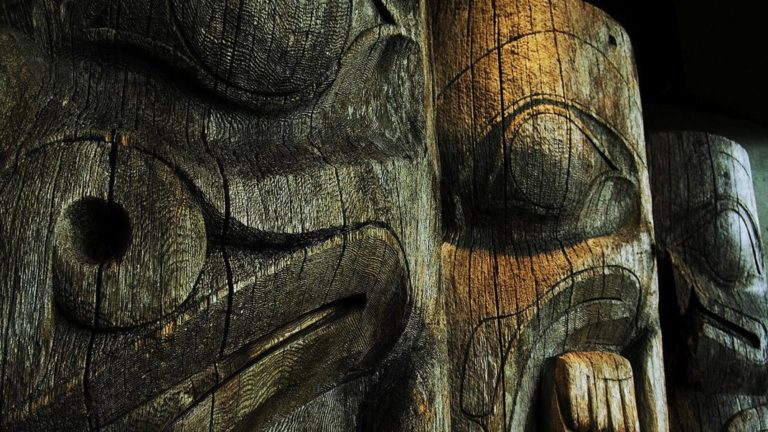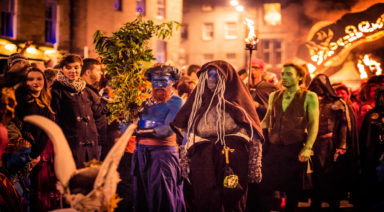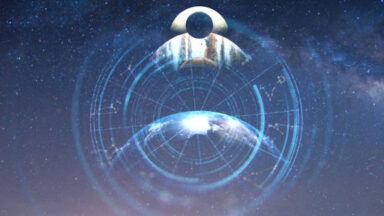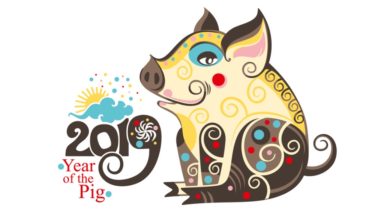Crocodiles and Plant Medicine: Lessons of the Modern Shaman

Crocodile came to me recently in ceremony. At first I was startled by his appearance, feeling I have already embraced every shadow aspect of myself he represents. Since his visit, however, I have spent time welcoming him and examining the teachings he now brings.
Crocodile/Snake holds our basal self, our deepest fears and lesser-evolved leanings which are held in the reptilian brain. In sacred ceremony and spiritual initiations, it is snake or crocodile who confronts you to face and embrace that which you fear most. His personal challenge to me: “You’re not a true shaman. You don’t work in the rain forest, you don’t ingest plant medicines, and you’re falsely holding your craft, thereby misleading those you serve.”
On more than one occasion I have been questioned and warned against calling myself a shaman. I haven’t studied in the jungle, I don’t have any hint of bronzed pigment in my Irish skin, and I don’t have a Maestro or don teaching me the ways. My path is unique in devoted past-life reclamation, shamanic journey, and an early proclamation at five-years-old that I would be a shaman. I was born ready and haven’t looked back. However, the thorny challenges still arise.
Enter the internal struggle of spirit and shadow. It’s brought me to a place of deep self-inquiry and an eventual and potent reclamation. It’s also offered me a new perspective on the path of the modern shaman.
What is a Shaman?
When asked, “What is a shaman?” my easiest answer is “someone who works in the invisible spaces to bring peace and healing to those whom they are in service.”
“Shamans are intermediaries or messengers between the human world and the spirit worlds. Shamans are said to treat ailments/illness by mending the soul. Alleviating traumas affecting the soul/spirit restores the physical body of the individual to balance and wholeness. The shaman also enters supernatural realms or dimensions to obtain solutions to problems afflicting the community. Shamans may visit other worlds/dimensions to bring guidance to misguided souls and to ameliorate illnesses of the human soul caused by foreign elements. The shaman operates primarily within the spiritual world, which in turn affects the human world. The restoration of balance results in the elimination of the ailment.”
Tryptamine Palace
In Cave and Cosmos, Michael Harner suggests it is simply “one who knows.”
Core and Indigenous Shamanism
The big divide in the shamanic communities lies between those who work in the rain forest with the lineage of indigenous wisdom in their blood; and so-called Plastic Shamans who have no connection to the cultures and traditions they represent.
As shamanism has gained prevalence in the modern era, “core shamanism” has become the accepted term for those who use the methods of the shaman but have not been raised in the traditional cultures. The Foundation for Shamanic Studies has reintroduced the shamanic journey for self-healing, while the Psychonauts have lead a revolution through chemically assisted self-inquiry. Both are valid paths that differ greatly from a jungle education. While the efficacy of the practice is all that should matter, there still lies a division.
Plant Medicine
Another crucial distinction for indigenous shamans is their relationships with the plants. Dietas are ceremonial ingestions of plant medicines that teach the shaman how to walk between and within the astral worlds. Any number of teacher plants are used, from tobacco to ayahuasca. These ceremonies are performed with great reverence and honor and remain within sacred guidelines as sincere spiritual endeavors to deepen the path of the seeker. The illusion of this world fades away and great insights are gained, revealing the true nature of one’s own soul.
Freakin’ awesome when done in this sacred space, right?
I, however, am a different kind of shaman. I traverse the dimensions without the use of hallucinogens. Drums, deep meditation, and the psychic connection with spirits and plant allies, for me, have been enough. And Croc challenged me on this also: “Is your plant abstinence genuinely enough to gain such an alliance with the spirit realms?”
In the modern world, our relationship to the plants is vastly different than that of the indigenous shaman. We don’t commune with them personally, nor do we seek to hone their wisdom. As a result, contemporary seekers often misuse the medicines. In my younger days, I experimented with mushrooms recreationally. I found them an expansive and uplifting dalliance that only affirmed my path as a seer and healer. Yet I took them with no noble intent.
Recently, I found myself called to work more closely with the plants in ceremonial space and felt conflicted. My ego holds my hallucinogenic refrain as a badge of honor — a way of ensuring the purity of the messages received. And yet I found myself deeply appreciating the plant spirits again, in great awe and gratitude for the teachings they shared.
And what they shared was this: I’ve connected more than sufficiently with the plant spirits. I learn and walk beside them every day to offer blessings to my community. I need not ingest them, for they have been my allies all along!
In a recent Aubrey Marcus podcast, Astral Snakes and Binaural Beats (episode 59), Cory Allen shared his most recent devotion is not in using the plant medicines, but rather simply being in the astral plane without any enhancements. Under the influence of the medicine, “The consciousness of the plant is with you in that space and colors your vision of that space. If you get there without it, you are completely you and you are on your own.” Boom, validation! And Croc began to smile.
What I realized was, it all comes back to me not having any allies, any perceptions, any filters on my experience in these worlds. The mark of the shaman is not who they are when they’re on the medicines or how they handle these energies inside of them. It is who they are in the absence of any aids at all!
The Origins of Shamanism

Shamanism has a long and storied history, considered by some to have originated in Siberia where members of indigenous tribes would gather the sometimes poisonous and highly psychoactive fly agaric or Amanita muscaria mushroom. But when this practice was recognized and classified as shamanism, it became apparent many cultures around the world conducted similar practices.
Shamanic Mysticism
It might just be the oldest spiritual practice in the world – one that is not necessarily based on faith in a particular god, but rather based on animism, the belief that everything is living and has a spirit.
Shamanism has persisted all over the world since its inception in ancient native cultures, including Siberian, Indian, Native American, and South American Shamans. Shamanism has had to fight oppression from governments and religions worldwide that perceive it to be a manic and primitive tradition. But its mysticism and continued practice remain strong throughout disparate tribal cultures, many of which had little to no contact for centuries, despite their very similar traditions, beliefs, and rituals.
So what is shamanism? Shamanism is thought to be the key to existence — as long as shamanic rituals are practiced we will continue to exist. Shamans are a link between our plane and higher planes of existence. They link to the spirit world in order to heal, contact deceased ancestors, influence the weather, and uplift consciousness.
Shamanism, a practice as ancient as the whispers of the wind, has danced through centuries, weaving its magic into the very fabric of human spirituality. Rooted in a kaleidoscope of various cultures across the globe, shamanism connects the physical and spiritual realms, where shamans act as intermediaries, uncovering profound wisdom and healing. From its beginnings in northern Asia to its modern popularity in South America, the story of shamanism’s emergence reveals why it continues to enchant and inspire seekers today.
Where Did Shamanism Originate?
Shamanism is believed to have originated in the ancient cultures of Siberia and Central Asia, particularly among the indigenous tribes of Siberia and Mongolia. The term “shaman” itself derives from the Tungus word saman, meaning “one who knows.” Anthropologists suggest that shamanic practices date back to the Paleolithic era, as evidenced by ancient cave art depicting shamanistic rituals and symbols.
Shamanism’s core belief system is animism—the understanding that every stone, tree, and creature carries a spirit. Shamans, with their unique ability to enter trance states and journey through unseen worlds, seek guidance, perform healing rituals for the sick, and speak with animal spirits and ancestors, weaving the threads of life and afterlife into a spiritual tapestry. These foundational practices reflect humanity’s ancient desire to find harmony with nature and the cosmos.





































